In recent years, the aviation industry has come under increasing scrutiny for its environmental impact, making sustainability a strategic imperative for airports worldwide. A standout name in this green transformation is Bangalore International Airport Ltd (BIAL), which recently achieved a major milestone—net zero Scope 1 and 2 greenhouse gas emissions—a full seven years ahead of schedule.
In this in-depth conversation with TheCSRUniverse, Mr. Sridhar L., Assistant Vice President and Head of ESG at BIAL shares the strategies behind the airport’s rapid transition to 100% renewable electricity, innovative water conservation measures, and circular economy practices such as using plastic waste in road construction. He also delves into the role of technology in driving resource efficiency, BIAL’s collaboration with global climate bodies, and the community-focused work of the Kempegowda International Airport Foundation. The interview offers valuable insights into how sustainability and infrastructure growth can go hand in hand—serving as a blueprint for airports and infrastructure developers across India and beyond.
Read along for deeper insights:
Q. BLR Airport recently achieved net zero Scope 1 & 2 emissions seven years ahead of schedule. What were the key strategies and innovations that enabled this milestone, and how do you plan to sustain this achievement going forward?
A. Achieving Net Zero Greenhouse Gas Emissions (Scope 1 & 2) seven years ahead of target is a reaffirmation of our long-standing commitment to sustainable aviation. This milestone not only sets a benchmark for us but also reaffirms our vision of a greener future for all.
This was made possible through an integrated decarbonisation strategy that included renewable energy procurement, energy efficiency initiatives, and sustainable mobility. A key enabler was the transition of 100% of our electricity consumption to renewable sources through a mix of on-site generation and long-term Power Purchase Agreements (PPAs).
This is an ongoing journey, and as we expand, we are scaling up green infrastructure and sustainable practices. Looking ahead, our commitment extends beyond Scope 1 & 2 emissions. Aligned with Airports Council International’s (ACI) Level 5 Carbon Accreditation, we are steadfast in our goal to achieve Net Zero GHG emissions including Scope 3 by 2050.
Q. We also wanted to know more about securing 100% of your energy from renewable sources. Could you walk us through the planning and partnerships involved in achieving this, and how it influences other parts of your ESG strategy?
A. BIAL’s transition to 100% renewable electricity was both strategic and deeply collaborative. We now procure 100% of our electricity from renewable sources, a mix of on-site solar and off-site PPAs, thereby eliminating Scope 2 emissions and accelerating our Net Zero journey.
This clean energy shift is part of our broader ESG vision to build a resilient, future-ready airport. To meet long-term energy needs, we've signed a 25-year PPA for power from a solar-wind captive project. Our expansion efforts also include deploying additional on-site renewable systems.
BIAL is committed to creating a meaningful impact not just for our customers and partners, but also for the communities and environment we serve. In line with our expansion plans, we have undertaken multiple initiatives to ensure the continuity of 100% renewable electricity consumption. These include the deployment of on-site renewable energy systems and procurement of off-site green power. Long-term Power Purchase Agreements (PPAs) are pivotal in supporting the airport’s growing energy needs and strengthening our commitment to sustainability and responsible growth.
Q. How does a weather-based smart irrigation system technology work and how has it impacted your operational sustainability and cost efficiencies?
A. Our weather-based smart irrigation system combines IoT and micro-irrigation technologies to manage our airport’s extensive landscape an intelligent, water-efficient manner. The system is remotely controlled via BIAL’s ICT network, and the Central Controller can be accessed through mobile and tablets for real-time monitoring.
Integrated with a flow sensor and rain sensor, the system prevents water and energy wastage. For example, the flow sensor prevents systemic leakages, detects abnormal patterns and signals the controller to shut downin case of variation in desired flow.
The Weather Station (WS PRO2) installed, checks the daily ET (Evapotranspiration) for the specific day (each day) based on Air temperature, Wind speed, Solar radiation, Wind direction, Relative humidity and Rainfall. The same ET data communicated to the central controller through BIAL ICT network and software automatically changes the irrigation run time which applies accurate water to the plantation. So, it makes the system smart, water efficient and plays an important role in optimizing the water requirement of plants based on the local weather.
A weather station (WS PRO2) collects daily evapotranspiration (ET) data—based on air temperature, solar radiation, wind, humidity, and rainfall, allowing the central controller to automatically adjust irrigation. This state-of-the art smart system ensures optimal water delivery tailored to real-time weather, enhancing landscape health while reinforcing Bengaluru’s “Garden City” identity.
Q. You have successfully implemented circular economy practices, including paving roads with plastic waste. What inspired these initiatives, and how do you measure their long-term impact on the environment and infrastructure?
A. Through a systematic approach to economic development, we have created a model that benefits, Businesses, Society & Environment. This would enable us to implement the Circular Economy concepts leading to resource efficiency with our stakeholders.
Our approach to circular economy is based on the principle that waste is a resource. This philosophy inspired the use of waste plastic in road construction within the BLR Airport campus. Following multiple trials, we implemented a sustainable model where 6% of bitumen was replaced with plastic waste, resulting in 70 lane kilometres of road built while contributing to Climate Change impact mitigation.
BIAL goes beyond segregating waste for recycling by actively integrating recycled products into our operations. This includes the use of recycled paper products and recycled plastic items, reinforcing our commitment to circular economy principles and reducing our environmental footprint.
Design-stage interventions now include circularity principles, helping ensure efficient resource use and long-term sustainability.
Q. Can you elaborate on BIAL’s water stewardship journey which has emerged as a core component of BIAL’s environmental stewardship?
A. At BIAL, water stewardship is central to our ecological restoration efforts. Our initiatives focus on sustainable consumption and replenishment strategies that are environmentally, socially, and economically beneficial.
By constructing 315 groundwater recharge pits within our stormwater network, we effectively harness rainwater to replenish aquifers and enhance local water availability. We’ve also developed large reservoirs to capture and store rainwater during the monsoon, enabling us to recover over 2 million litres per day of potable water—meeting nearly two-thirds of our airport’s potable water needs.
This infrastructure supports our current Water Positivity Index of 2.36, meaning we replenish more than twice the amount of water we consume, a significant improvement from our 2019 index of 1.37. Rainwater is collected in dedicated harvesting ponds, with excess runoff directed into stormwater channels that recharge groundwater and support nearby water bodies.
Our commitment further extends to the community through initiatives such as Namma Nela Namma Jala, which has delivered clean drinking water and improved sanitation to over 11 villages. Additionally, our collaboration with the Karnataka Horticulture Department has helped revive the endangered Devanahalli Pomelo, a GI-tagged fruit native to the region, boosting local biodiversity and livelihoods.
These efforts reflect our belief that sustainable environmental impact must go hand in hand with meaningful community engagement—a philosophy that continues to shape our long-term ESG vision.
Q. KIAF (Kempegowda International Airport Foundation) is also playing a key role in uplifting communities. How does the foundation align with your broader ESG goals?
A. The Kempegowda International Airport Foundation (KIAF), BIAL’s CSR arm, is a key enabler of our ESG strategy, aligned with the UN Sustainable Development Goals. Its initiatives span five pillars: holistic education, health & nutrition, integrated village development, water & sanitation, and cultural preservation.
Through initiatives like:
- Adopting and upgrading government schools with infrastructure, faculty support, and digital learning tools
- Providing free breakfast and lunch to schoolchildren in partnership with Sri Sathya Sai Annapoorna Trust
- Delivering clean water and sanitation facilities in schools and communities
- Running digital and financial literacy programs for youth and women
- Promoting solid waste management and green skills training in rural panchayats
Through these long-term initiatives, KIAF has already impacted over 20,000 individuals. We now aim to scale these programs, especially model schools and kitchen gardens, while integrating climate education and digital access - deepening our commitment to equity, empowerment, and sustainable growth at the grassroots.
Q. What are some of the biggest challenges you've faced in embedding sustainability into a complex, high-traffic infrastructure like an international airport, and how have you navigated them?
A. The scale and complexity of airport operations mean that sustainability can’t be an afterthought; it must be embedded into core systems. Key challenges include:
- Aligning individual stakeholders towards common sustainability goals
- Managing resource consumption without impacting passenger experience
- Ensuring regulatory compliance across multiple jurisdictions
We navigated these challenges through consistent stakeholder engagement and driving the journey in a collective and collaborative approach.
Q. Looking back at your sustainability journey so far, what have been the most significant learnings, and how are these shaping BIAL’s roadmap for the next decade?
A. Our journey has taught us that sustainability is long-term and must be woven into core operations through a balanced approach. Early adoption of technology, data-driven governance, real time interventions, and stakeholder collaboration have been pivotal.
We have already adopted sustainable solutions like electric vehicles, renewable energy, and advanced water systems. For the decade ahead, we are doubling down on Scope 3 emissions, and scaling community-inclusive circular economy models. Stakeholders are key to us, and we will continue to work collaboratively. Our roadmap is shaped not just by internal ambition but by our responsibility towardsour ecosystem.
Q. With global conversations intensifying around green aviation and sustainable transport, how is BIAL collaborating with airlines, government bodies, and global forums to advance shared climate goals and influence policy-level change?
A. BIAL is proud to be the first Asian airport to achieve ACI’s Level 5 Carbon Accreditation, reflecting our leadership in collaborative climate action. Having already reduced Scope 1 & 2 emissions by 95.6% and achieved Net Zero status seven years early, we’re now targeting Net Zero Scope 3 emissions by 2050.
Our partnerships include:
- Enabling the use of Sustainable Aviation Fuels (SAF) and exploring hydrogen-ready infrastructure
- Encouraging airlines to use FEGP and already this approach has eliminated around 40000 tonnes of GHG emissions
- Actively participating in Airports Council International (ACI), Ministry of Civil Aviation (MoCA), Director General of Civil Aviation (DGCA) and international forums to shape green aviation policies
- Hosting stakeholder workshops and awareness campaigns to align stakeholder interests related to ESG
These collaborations extend our climate leadership well beyond our airport.
Q. As a frontrunner in sustainable aviation infrastructure, what advice would you offer to other Indian airports and infrastructure developers looking to prioritize ESG without compromising on growth?
A. The most critical takeaway is that sustainability is a long-term journey, one that must be driven by collaboration and a shared vision for a sustainable future. ESG principles should be embedded from the design and planning stages, with both new and existing infrastructure thoughtfully evaluated for sustainability opportunities.
Consistent ESG communication enhances transparency and stakeholder trust. Sustainability doesn’t oppose growth; it enables and secures it. A long-term, collaborative approach is key to future-proofing infrastructure.
Q. With such impressive ESG performance so far, what are your priority areas for the future?
A. Our Sustainability Vision: Touch lives by nurturing a sustainable future through initiatives that drive economic, social, and environmental transformation
Our priority areas include:
- Water Stewardship
- Net Zero GHG Emissions
- Sustainable Procurement
- Circular Economy
- Community-aligned Noise Management
- Sustainable Mobility
Core to these is Corporate Social responsibility & Behavioural change—driving lasting transformation. These principles are deeply embedded in our decision-making, ensuring that we leave a stronger legacy for generations to come.
We remain committed to becoming a global benchmark in sustainable aviation.





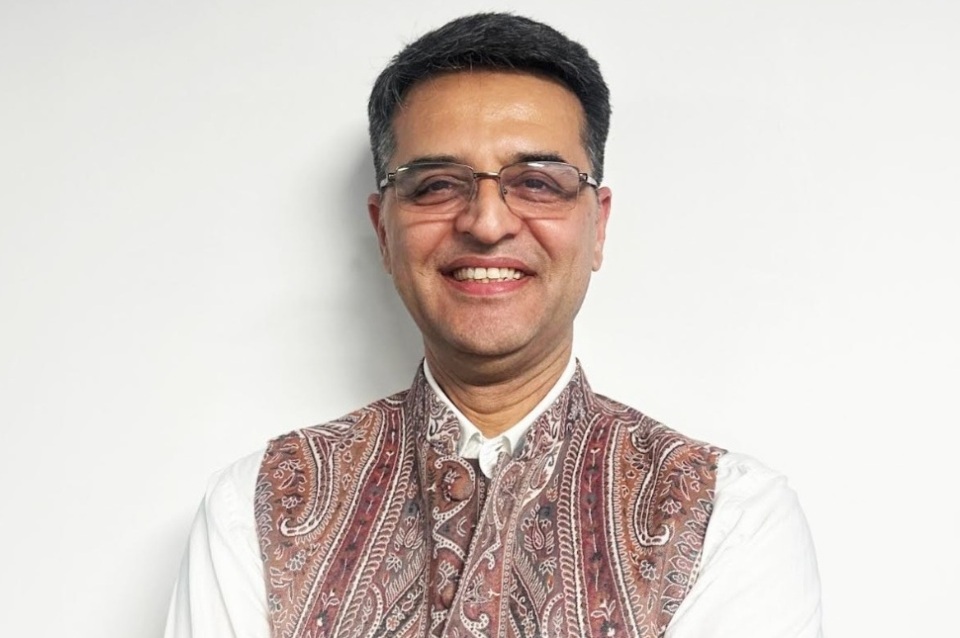



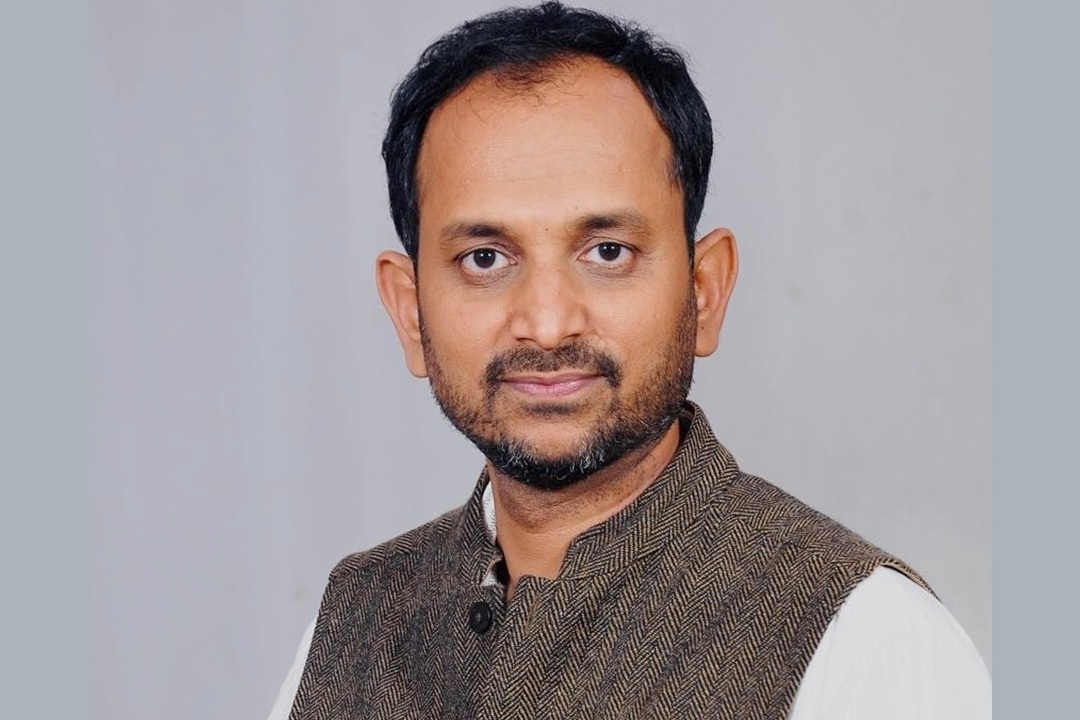

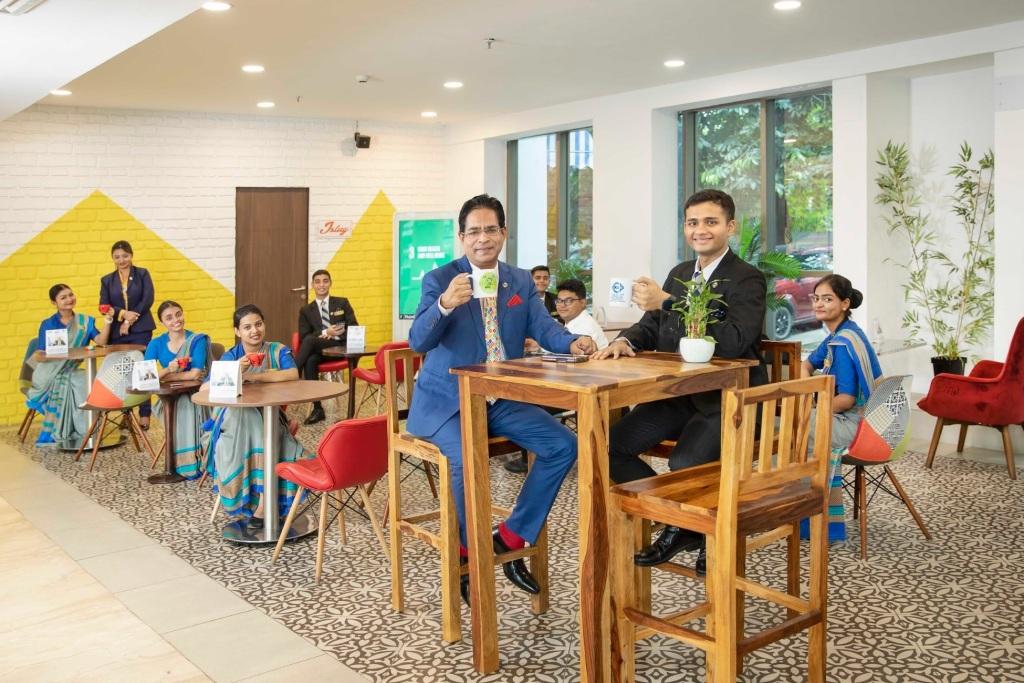
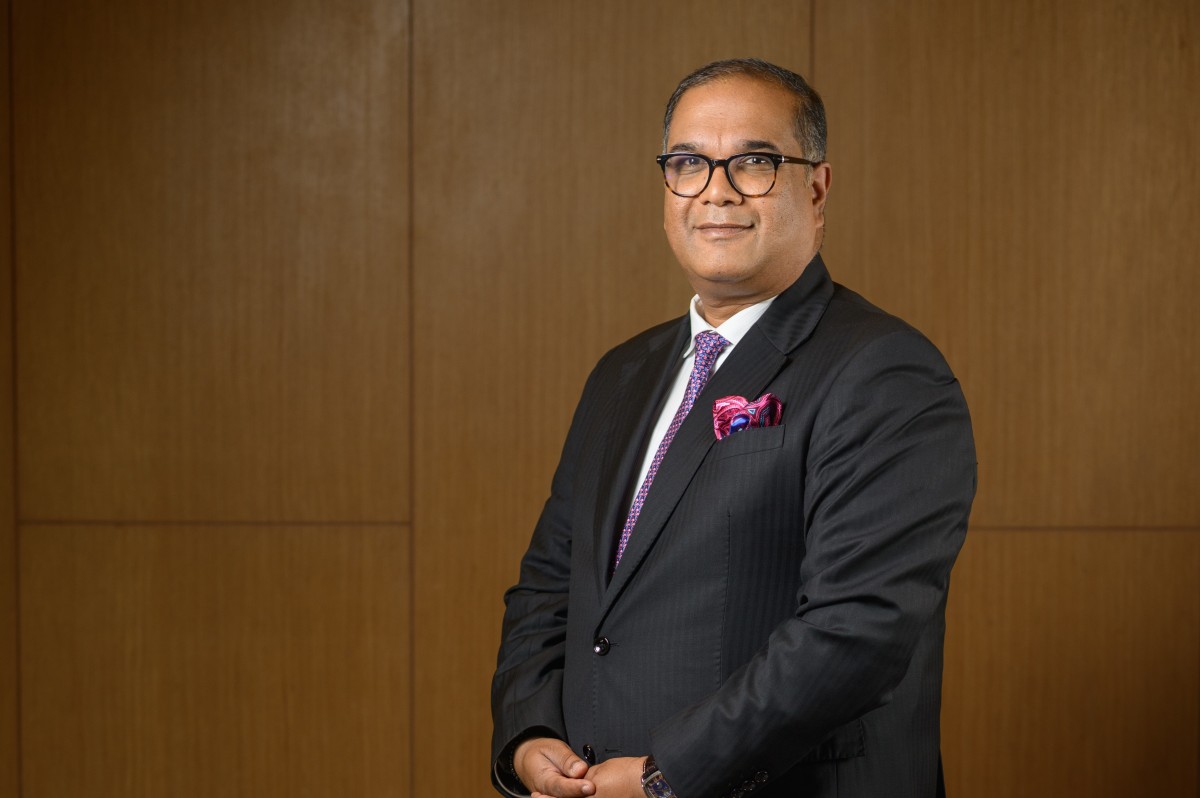
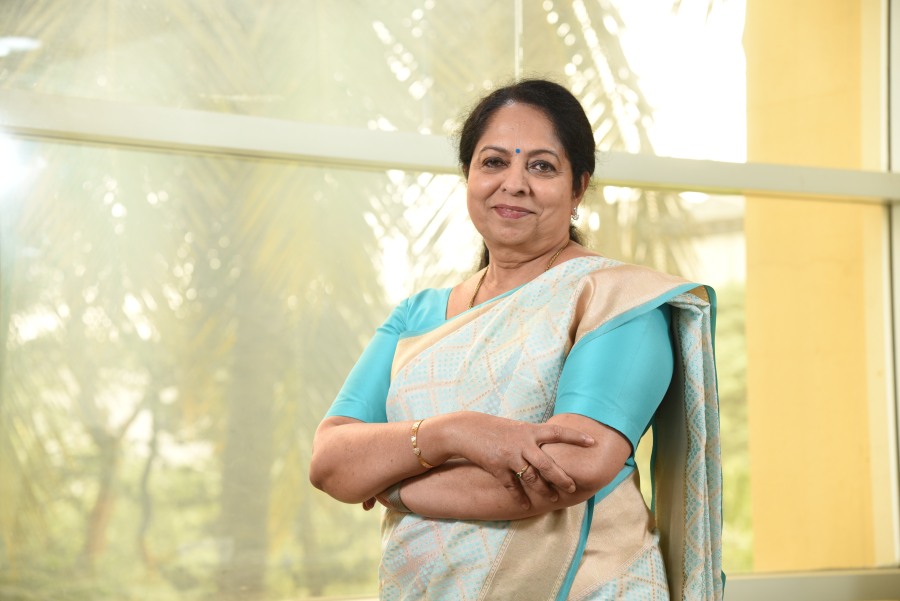
.jpg)




